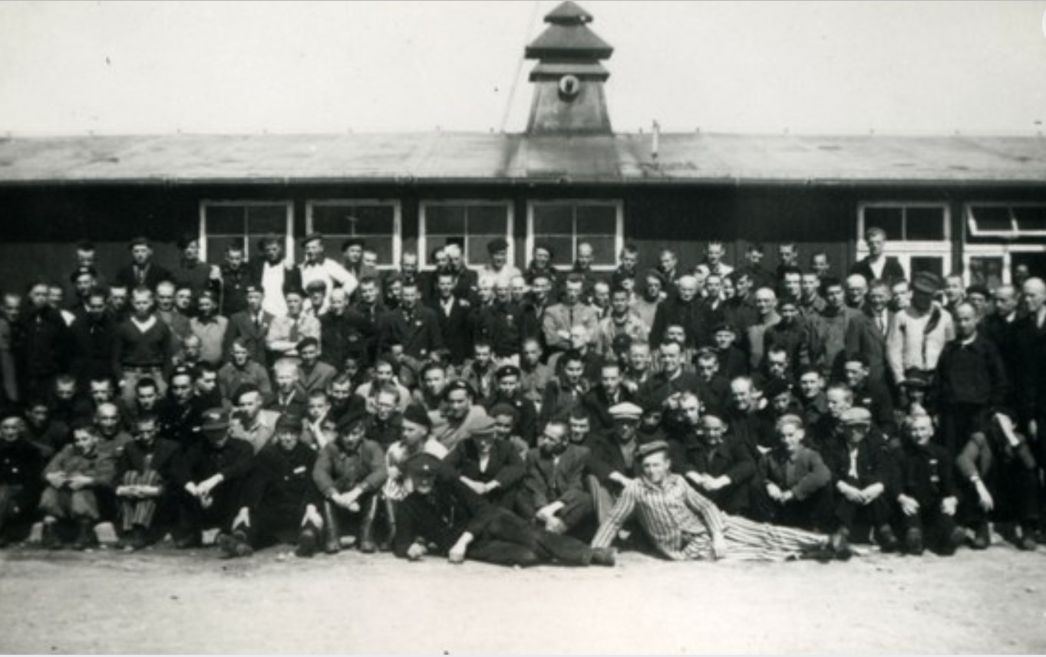
Between 1940 and 1945 there were some 3,000 Dutch inmates interned at Buchenwald. Over 700 of them perished here, and hundreds more died in other concentration camps to which they had been deported.
Most were resistance fighters, whom the SS used for forced labour in the German weapons industry. There were also Dutch Jews deported to Buchenwald, but they were often sent on to other camps.
The Dutch were usually deported from police detention centres in Amersfoort, Schoorl, and Westerbork, which were under the administration of the commanding officer of the "Sicherheitspolizei" (security police). These centres were set up after the occupation of the Netherlands in 1940. The central administrative offices of the Sicherheitspolizei and its five branch offices employed some 700 people. These administrations organized the persecution of resistance groups, communists, and Jews.
A special group of Dutch inmates were the over 300 hostages held as leverage against the internment of Germans in the Dutch East Indies. Separated from the other inmates, they had their own accommodations (block 41). Among them was Willem Drees, at the time the chairman of the parliamentary group of the Social Democratic Workers' Party and later prime minister of the Netherlands. The hostages also included many members of the Dutch royal staff (private secretary, chamberlain, stable master).
At the end of the war, the Dutch inmates formed their own aid committee, which tried to support the other inmates. The Dutch were also active in the camp resistance efforts. One of the resistance members was the graphic designer Henri Pieck, who secretly made sketches of the horrifying situation in the camp.
Chronology
1940
July/October: 356 Dutch citizens (mostly prominent politicians, officials, teachers, bureaucrats, journalists, and artists) are taken to Buchenwald as hostages. The reason: revenge for the internment of German nationals in the Dutch East Indies.
1941
February: 389 Jewish men from Amsterdam and Rotterdam are deported to Buchenwald and then to Mauthausen in an act of retaliation against the resistance.
April: 157 Dutch citizens, largely members of the "De Geuzen" resistance group, are deported to Buchenwald.
1942
Transports arrive from the Amersfoort detention centre carrying Dutch resistance fighters, communists, and Jehovah's Witnesses.
1943
January: 325 Dutch political prisoners are being held in Buchenwald. Internment of Dutch citizens forced to work in the German arms industry, due to work offenses.
1944
Spring: Over 50 Jewish men arrive from Westerbork.
April: 499 Dutch citizens were brought from the Amersfoot transit camp Amersfoort (the largest transport from the Netherlands to Buchenwald). By the end of the month there are almost 1,000 Dutch inmates.
July: Arrival of Dutch resistance fighters, sent by the commanding officer of the Sicherheitspolizei in Den Haag.
1945
January: Over 250 Dutch Jews arrive at Buchenwald in death marches from the cleared camps of Auschwitz and Groß-Rosen.
Prominent Personalities
- Jo Juda (1909–1985), violinist, concertmaster
- Willem Drees (1886–1988), politician, 1948–1958 Prime Minister of the Netherlands
- Vincent Weijand (1921–1945), poet, died in Buchenwald
- Johnny & Jones (Nol van Wesel and Max Kannewasser), popular Swing-Duo, deported to Auschwitz, from there to the Ohrdruf subcamp of Buchenwald, perished 1945 in Bergen-Belsen.
- Willem F. van Bodegraven (1903–1992), architect
- Henry Pieck (1895–1972), graphic designer
- Salomon Jean René de Monchy (1880–1961), mayor of Den Haag until 1940
- Pieter Geyl (1887–1966), professor, historian
- Johan Eijkman (1892–1945), theologian, minister
Staff of the Royal Family and Employees of the Dutch State
- Jean Chrétien Baron Baud (1893–1976), private secretary, chancellor of the Dutch royal family
- Cornelius Dedel (1894), royal chamberlain, secretary of Prinz Bernhard
- Wyborgh Sweerts de Landa (1891), queen's chamberlain
- Charles Emile Joseph Maria Verheijen (1892–1941), 1st stablemaster to the queen, died as an inmate in Buchenwald during treatment at a hospital in Jena.
- Jan de Beaufort (1880), Secretary of the Dutch State Council
- Anton Marie Louis von Hombracht (1892), government official
- Charles Monod de Froideville (1896), government official
- Johan van Veen (1896), court official
- Christiaan Everhard Salwegter, master of the household

